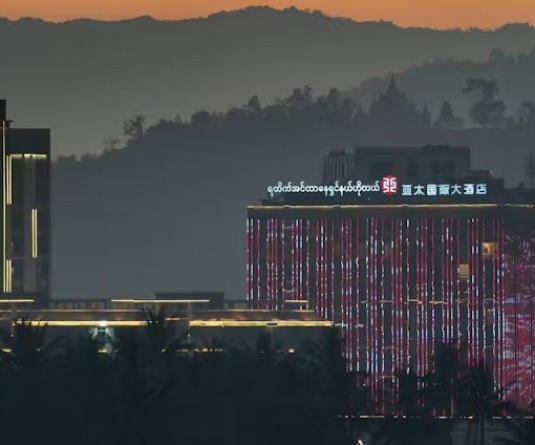
The struggle for space among the transgender community
Sentsuthung Odyuo
Wokha
“Violence and stigmatization best describes the life and affairs of the transgender people, be it private space or public space, there is not enough room created for them to endeavour their identity in the already shaped society”, Transgender Activist.
There is a complex relationship between transgender people and their spatial identity; studies suggest that the transgender community experience various exposures in their quest for survival in the day to day life. The very word “transgender” is a connotation that interlink with taboos in different societies, it is rarely forayed because of the underlying controversy it holds, and there is also a lack of literature that explored the lived reality of transgender people. There is a need to highlight this often neglected group and consider the nature of their perception on a variety of spaces.
The constructions of gender tend to demand conformity by adhering to only two choices of gender identity, male and female, transgender individuals transgress this binary conception of gender by deviating from the societal gender norms associated with the sex assigned at birth Dietert & Dentice (2013).
Beginning of the 1870s, to erase hijras (transgender in the Indian context), it was seen as a visible social category and gender identity in public space through the prohibition of performance and transvestism, and till date not much has been changed, amidst the supreme court allowing special legal aid for this section of people. Looking at the present scenario of the transgender, the situation seems to have gotten worse. Some have argued that transgender spaces occur at the margins of society and constitute a safe haven for the LGBT oppressed by the hetero-normative nature of urban areas.
Ki (1995) highlighted the division of public and private spaces, which relies upon and reinforces a binary gender system, has profound implications for people who live outside normative sex-gender relations. The writer stressed that transgender are in jeopardy in ordinary public spaces. Though one must account for the workings of gender in these sites, an investigation of violence against transgender would also account for the emergence of transgendered public space. The transgender besides their private life in the communities that provide social organization, community affiliation, and safety, transgender individuals often experience gender-based social rejection like discrimination, violence, and exclusion in public spaces. Anthropologist Srivastava (2012) gave a vivid elaboration by determining spaces having a dual identity. He stressed that Public spaces such as streets, parks, marketplaces, offices, shopping malls, schools, or universities often represent male space. In contrast, the home as private space is represented by females while males have the privilege to enter and form public spaces as domains of action, women are often excluded by taking care of the domestic sphere. The division of public and private spaces into male and female leads to the fact, that public spaces are (besides inherently classed) inherently gendered in particular transgender identities with female public appearance – become victims of public discrimination. On the other hand, they lack acceptance and recognition of what is considered by society as “Normal”.
Transgender population remain one of the most vulnerable inhabitants of urban spaces, according to Doan, there is a twofold element to their vulnerability, first is the fear of exposure or “outing” to the wider community in which they live and work, the other part of the fear is due to the potential trans-phobic violence and abuse they may face in daily life. For both components of fear, the nature of gender embodiment matters and can be significantly different for trans-men and trans-women. In an urban area, those people who transgress gender norms risk public ridicule and approbation. Individuals who are able to pass easily as their preferred gender are likely to have less direct confrontations, but are still aware that they would be subject to harsh disapproval if they are discovered to be transgender. Once discovered any transgender person could be the victim of discrimination or overt violence, in 2014 the Supreme Court recognized transgender as a legal third gender which sets a landmark for India and called on the government to ensure their equal treatment, which has made India one of the few countries to do so. But the stigma and other challenges in the wider society are a reminder of the hard work that lies ahead, and the conceivable spaces that the society has in store to them.
A secondary data from a survey of 149 transgender individuals in major cities in India, indicates that although queer spaces provide a measure of protection for gender-variant people, the gendered nature of these spaces results in continued high levels of harassment and violence for this population, the strongly gendered dimensions of these spaces suggest that a discursive revisioning of gender is needed to create more transgender-friendly urban spaces. Their promiscuity in public has made them easy targets of violence, in such context the public spaces are being constructed with gender-segregated facilities, which serve to determine who is to be allowed and not, to obtain a particular space. For Herman (2014), Gender segregation is commonly found in public restrooms, locker rooms, dressing rooms, homeless shelters, jails, and prisons and is intended to provide safety, order, modesty, and security in these facilities. Koch(2014), in extreme cases transgendered teens may flee punishing home environments and seek work on the street, they may be joined by newly unemployed trans people who find it difficult to obtain another job. This practice becomes one identification to relocate their spatial structure in society, those transgendered people who are rejected by their families experience fewer opportunities for education and are forced to work in unskilled labour positions.
Over the years there has been an uproar majorly in mainstream spaces to revolutionise movement for equal treatment towards the transgender community, it forays a tribute for a need to recognise identified transgender people in a society that identify transgender individuals as an outcast, the movement for justice has set a benchmark for many that are confined in social norm to be accepted and acknowledge by the society. It is evident that the debates encompassing transgender in the Indian society still need adherence because of the varied conventional social construction and belief system yet there is a strong desire that our society will one day acknowledge transgender individuals as another human being by providing them with the space they deserve. The recent amendment of Law in Uttar Pradesh to empower the transgender community with Right to inheritance of ancestral agricultural land is a step closure in transforming the lives of the transgender community.
India’s first transgender school was opened in Kochi and it highlighted a positive narration for the transgender community. The school, Sahaj International, the first of its kind in the country, is expected to go a long way in ensuring equal opportunities for transgender who have dropped out of school. A space created for the younger generation to enhance their day to day expression and a movement that can keep sight in the long run. One straightforward and direct strategy is to show an association planned to give safe space to transgender individuals and to be unequivocal about that cause. The utilization of signs that explicitly incorporate the words transgender can be a pointer that trans individuals are genuinely welcome and not simply a letter in the alphabet of the political consideration that is either recalled or overlooked but provide them with the space needed in an hour with lesser or no prejudice, after all, they are all human being and have equal rights to perform whatever they like/prefer.
The writer is a Research Scholar at Christ University, Bangalore.






